Twelfth Night 1971
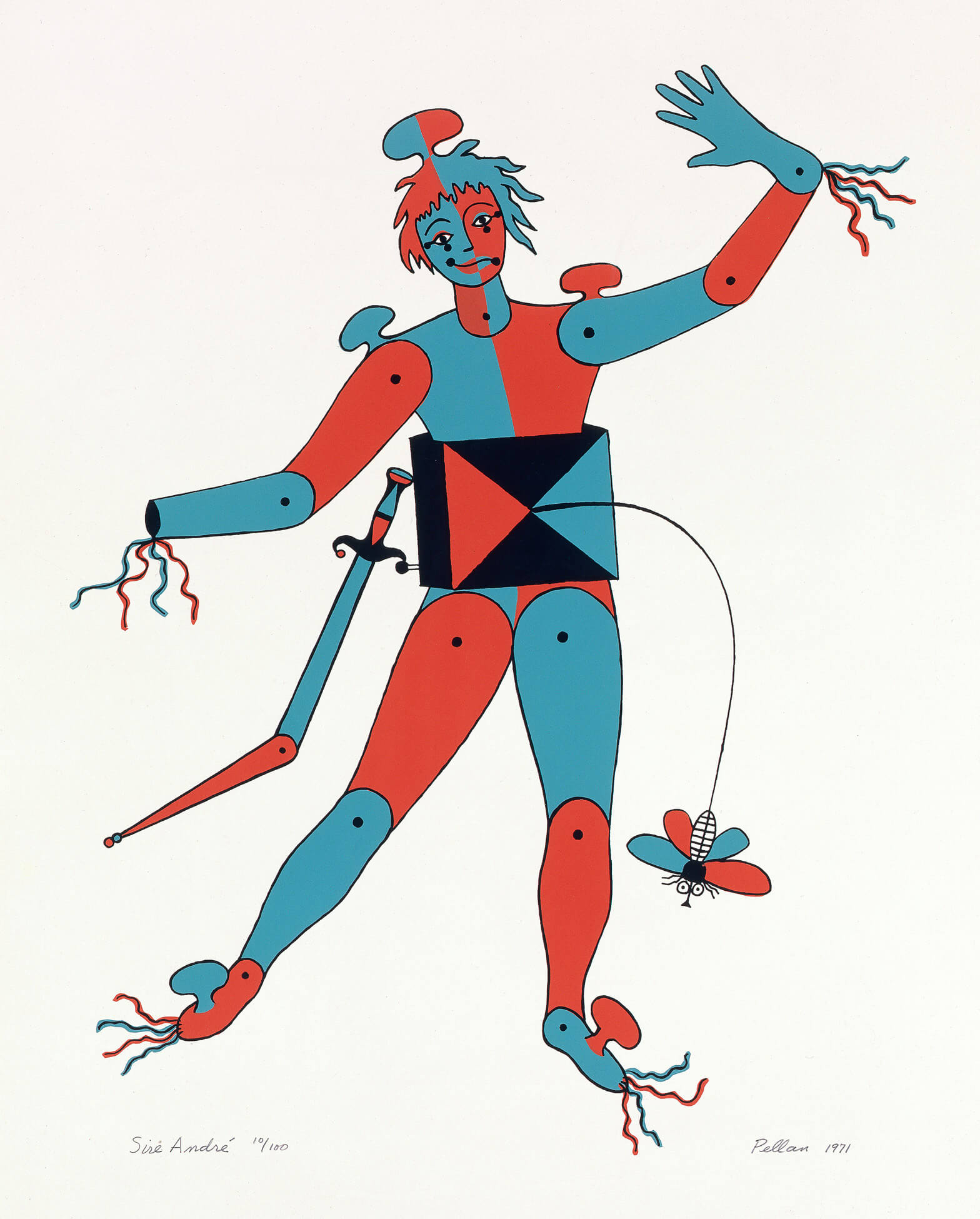
Alfred Pellan, Sire André, from the artist’s book Sept costumes et un décor pour La nuit des rois de Shakespeare, 1971
Serigraph, 10/100, 65.8 x 50.6 cm
Musée national des beaux-arts du Québec, Quebec City
In 1946, Alfred Pellan created costumes, set decorations, and props for a production of Shakespeare’s Le soir des rois (Twelfth Night) presented by the theatre company Les Compagnons de Saint-Laurent at the Gesù theatre in Montreal. The director of the troupe, Father Émile Legault, was initially “less than enthusiastic about having a modern artist handle the visual presentation of the piece, but he conceded to the reasoning of [actors] Jean Gascon and Jean-Louis Roux, both fervent admirers of Pellan”; the two would go on to co-found Théâtre du Nouveau Monde (TNM). In 1967, Roux, who was then the artistic director of TNM, invited Pellan to revisit this story—first in the framework of a festival, and then as part of his adaptation of Twelfth Night, presented in 1968–69.
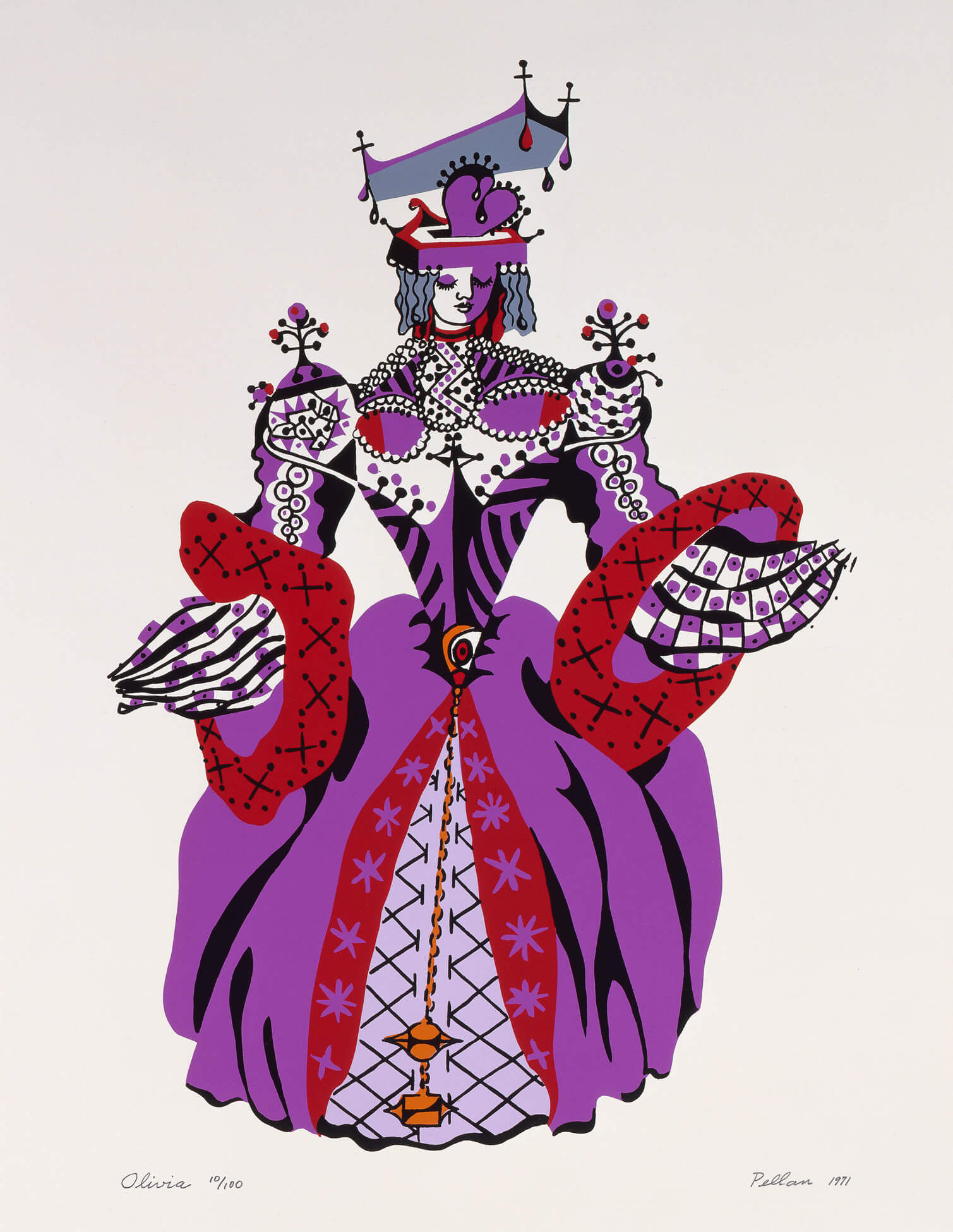
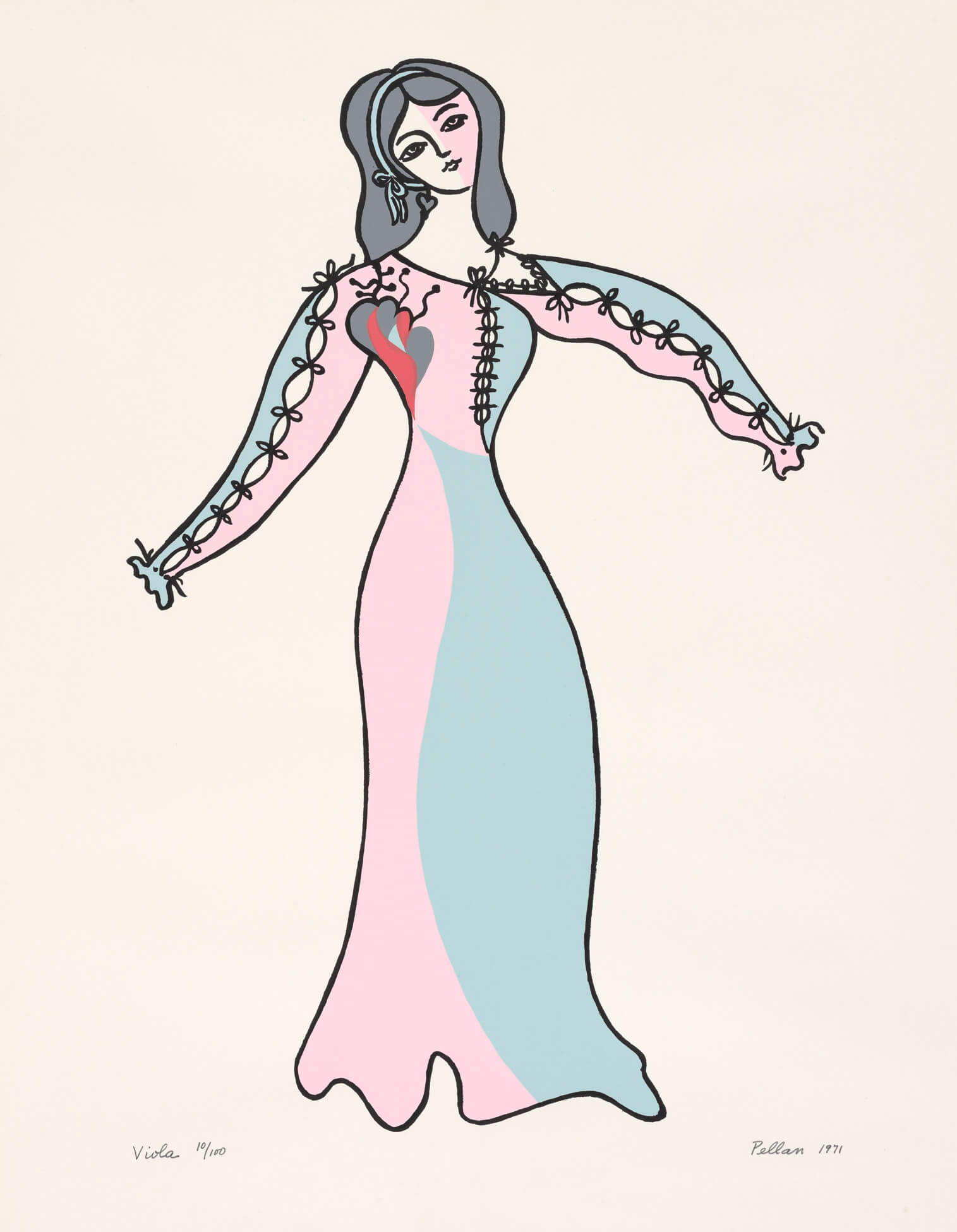
Pellan, who described the play as “a fantasy, an enchantment that commands all of the resources of the imagination,” produced a Cubist-infused Surrealist universe. Each costume transformed its actor into a canvas, painted in the liveliest colours—the comedic supporting character Sir Andrew, for example, is playfully clad in red and turquoise. Though Pellan was always best known as a painter, the Twelfth Night designs demonstrated his remarkable aptitude with other media.
Divided by a single horizontal line, the large-scale background panels in the TNM production were separated into two picture planes: vibrant colours dominated the upper part, while dark and sombre tones on the bottom allowed the outfits to stand out. The characters developed in front of these canvases: through the actors’ movements, the colours of their costumes—rich purple for Olivia, blue and pink for Viola, orange and red for Sir Toby—continually shifted the overall spatial organization.
Some critics voiced concern that by conveying his personal vision of Shakespeare’s world, Pellan betrayed the author’s original intentions. They feared that with costumes and decoration commanding attention, audiences would be distracted from the play and the interactions between the characters. While some may have been overwhelmed by the marriage of Shakespeare’s text and the artist’s visual universe, as noted by writer and director Éloi de Grandmont, one of Pellan’s students, the design should not simply complement the text—rather, the combined elements should work together to create an “authentic rhythm for a poetic masterpiece,” as the artist achieved with this production.
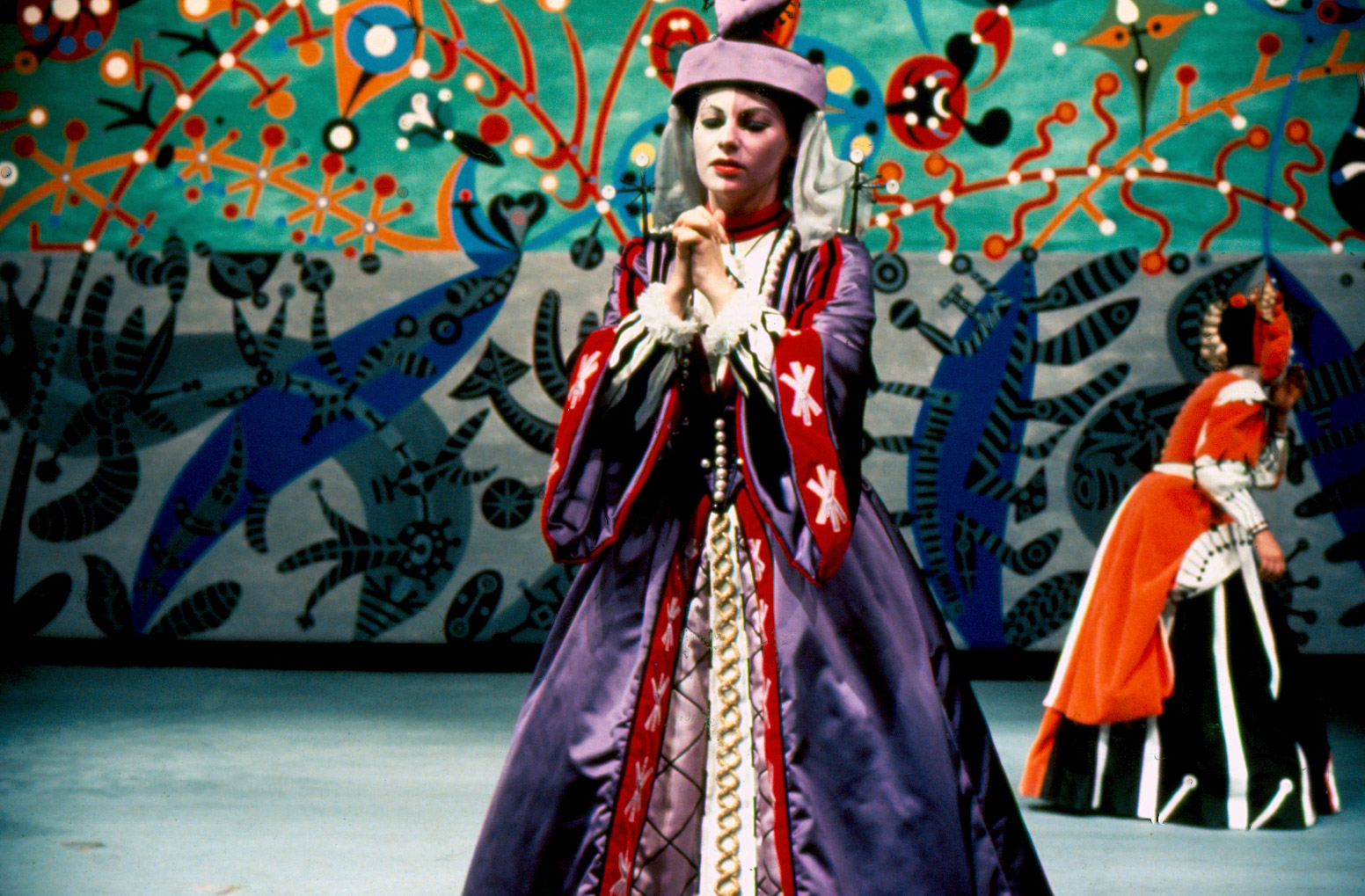
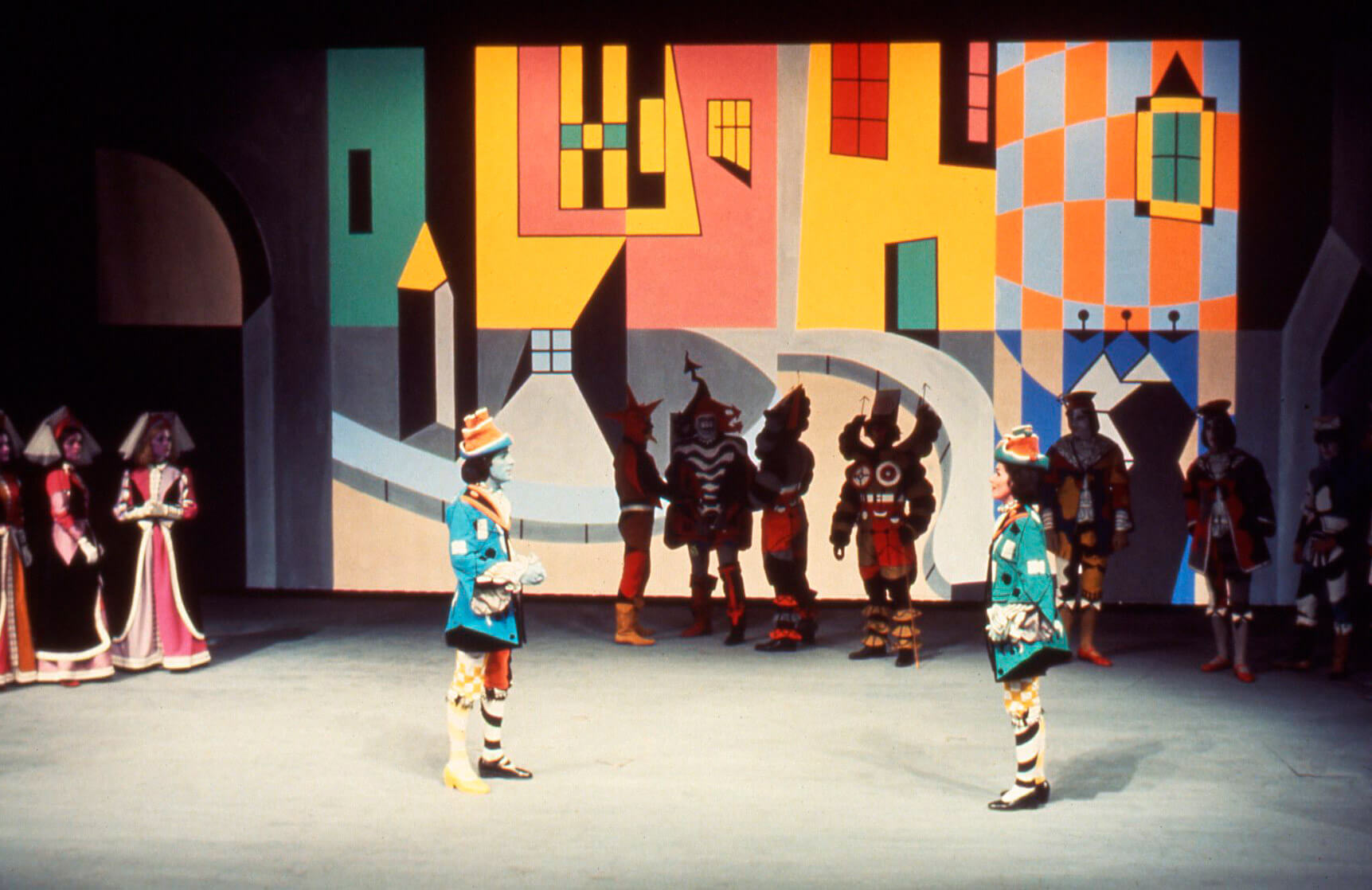
Most critics responded well to Pellan’s theatrical design, which created a unique world for the play and added depth to the characters. His costumes served as a kind of visual commentary on each role—some included elements that exaggerated certain attributes in ways that verged on caricature. The overall effect was both depersonalizing and defining: the elaborate costumes and makeup (which covered each actor’s face) masked the performers’ identity while amplifying their characters’ personalities beyond the limitations of the descriptions in Shakespeare’s text.

 About the Author
About the Author
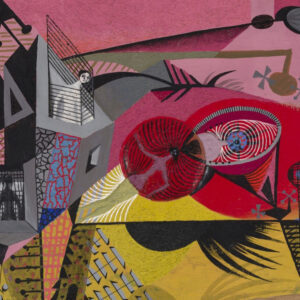 More Online Art Books
More Online Art Books
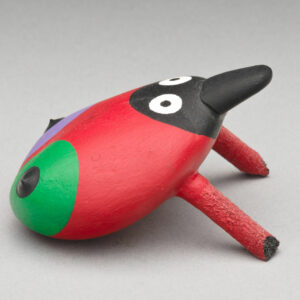 Acknowledgements
Acknowledgements